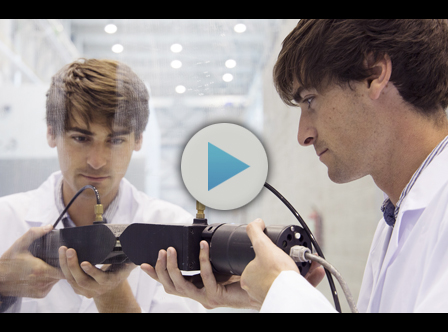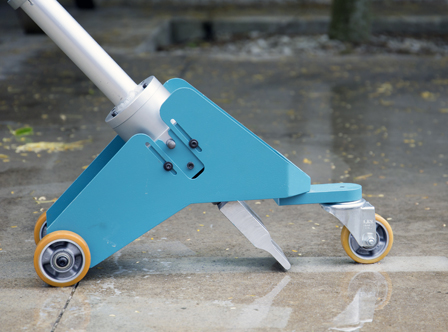PROJECTS
This solution enables a complete contactless recovery of solar collector reflectivity and reduces water consumption significantly.
The performance of a thermosolar power plant is directly associated with the reflectivity of the solar collectors it is made up of. Their main mission is to collect the energy produced by the sun so it can be converted into thermal power. To achieve optimum operation, it is essential that the mirrors used by these systems be spotless.
Within this context, IK4-TEKNIKER has developed and patented an ultrasonic cleaning system for large surfaces that optimises maintenance actions applied to heliostat solar collectors, a model that features one or several mirrors that move along the same path as the sun.
To date, the technique most commonly used to clean these devices is based on pressurised water jets followed by brushing. This means that large amounts of water are involved and that cleaning levels are low. What also happens is that dust particles of less than one micron are very difficult to remove. The second option achieves a high level of cleanliness but, as it involves physical contact, mirror surfaces tend to get scratched and this reduces reflectivity irreversibly.
Thanks to the technology designed by IK4-TEKNIKER, mirror reflectivity recovers up to 100% of factory default settings and only a minimum amount of water is consumed (in fact, 600 times less than the system equipped with pressurised water jets). It also minimises physical contact. To this end, an ultrasonic device that removes dirt from a mirror has been designed that also wipes its surface.
Contrary to other conventional procedures, this system, called ultrasonic immersion-free cleaning, does not require a tank in which the object to be cleaned has to be deposited. This is a major advantage as the system can be applied to large surfaces or units subject to constraints in terms of mobility. This makes it possible to produce a cavitation field (i.e., the active principle of ultrasonic cleaning) on a thin layer of water deposited on the surface to be cleaned.
This technology cannot only be used to clean glass, but can also be applied to flooring, facades, wood, etc. It therefore offers an extensive range of options for urban and industrial maintenance companies, developers of cleaning systems and manufacturers of large components.





